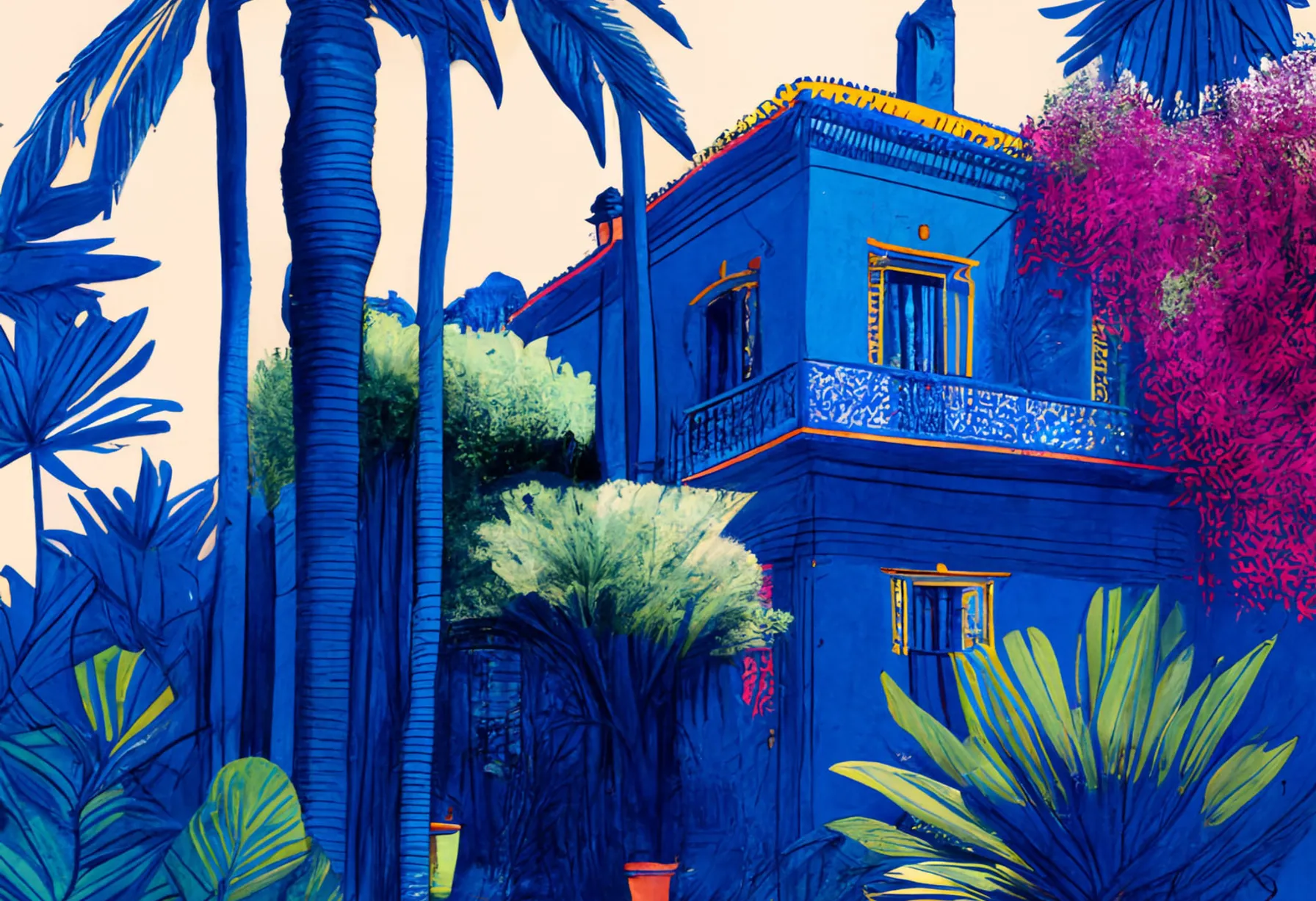In the heart of the Majorelle Garden in Marrakech

Water lilies resting on the surfaces of ponds, wafts of jasmine, giant cacti, carob trees, the bright pink of bougainvillea flowers, tall coconut palms, lotus gardens, ethereal bamboos, date palms, cypresses standing as they do in Tuscany... In his 30s, Majorelle embarked on a wildly ambitious architectural and landscaping project. Little did he know the destiny that his creation would have. Heads of state fell for this impressionist garden, including Winston Churchill who made sure to stroll through it. Almost 100 years later, visitors acclaim the blue garden during their stay in Marrakech. Words fail to describe this living work of art, resembling an oasis. According to the English-language site Housefresh, the Majorelle Garden is ranked second in the list of the most beautiful gardens in the world, after the Gardens-by-the-Bay in Singapore. Why not stop by its terrace cafe and enjoy a mint tea, the most refreshing drink in these hot climates?
Jacques Majorelle under the spell of Marrakech
Let's go back to the beginning of this beautiful story. Jacques Majorelle fell in love with Marrakech when he visited in 1917 to undergo convalescence at the invitation of General Lyautey, a friend of his father. The country was under French protectorate, and the orientalist painter was captivated. Initially, he bought a 1.6-hectare plot on the edge of the palm grove. The land was planted with “saf saf” poplars in Arabic. Soon, he had a Berber building with a tower built, which he used as a workshop. However, Majorelle had seen the gardens of Islam, he was enchanted by the freshness they provided, the shaded courtyards, the play of water... He intended to recreate this lost paradise. Moreover, he was crazy about botanical gardens. He then expanded his plot and gathered over 300 rare plant species ranging from coconut trees to water lilies. Furthermore, he enlisted architect Paul Sinoir, who built him a cubist villa extended by a long pool in an oriental style.
The painter made his choice; he covered his house in an ultramarine-cobalt blue inspired by the waters of Tasgah in the Moroccan Atlas. The so intense Majorelle Blue, sometimes referred to as electric blue, was born. It is composed predominantly of blue but also of red and green, and the artist even registered the name in 1931. Everything from the jars, the gates, to the pergolas was rendered in this blue that brings much joy. Reviewing the artist’s canvases, it is clear that this blue is omnipresent. In a Market in Marrakech, it's a window, a blind, shawls that are rendered in this blue. Similarly, the Oued de Mellah shows waters of this blue color. Even in the paintings of African Nudes, the background is made in this deep tone. This is how we can recognize Majorelle's work thanks to this unique hue.
Yves Saint Laurent and Pierre Bergé
After being amputated of part of its surface and given to the city of Marrakech, the garden is abandoned. In February 1966, an unexpected event occurs. "The French couturier Yves Saint Laurent and his friend Pierre Bergé arrive in Marrakech aboard an Air France Caravelle. They stay at La Mamounia, at the time a quaint luxury hotel. The weather is gloomy, and they do not really like the city. Then the sun appears, the Atlas reveals its snow-capped peaks, the scent of jasmine fills the air, and the sun floods the city with light. It’s a shock." The couple decides to acquire the blue snake house in the medina. It is important to note that the couturier spent his childhood in Algeria and in Morocco he feels brought back to his origins. Every year, he travels to Marrakech in winter and summer to design his collections. Majorelle Garden delights him and he is surprised that it is not much frequented. Yves Saint Laurent declares that he rediscovers colors unique to Matisse there.
Wanting to be closer to Majorelle Garden, Yves Saint Laurent and Pierre Bergé buy a nearby house. The garden is no longer maintained and gradually falls into disrepair. When a hotel complex project emerges that threatens its existence, the couturier and his companion embark on a crazy venture, buying it to prevent its demolition. Thus, they acquire the garden in 1980 as well as the adjacent blue villa which they rename Villa Oasis. They settle in this Moorish house which they restore with the help of their friend decorator Bill Willis. They also choose to display the private collection of Islamic art that they have composed from objects from Africa, the Orient, and Asia. However, life has never left Majorelle Garden, we hear bulbuls, robins, and blackbirds singing... Now it is a matter of restoring the garden to its former glory. For this, they turn to an ethnobotanist who will take 10 years to create this masterpiece. Together with Villa Dar El Bacha, Villa Oasis is certainly the essential villa of Marrakech.
A foundation is created in 2001 to protect the ecological, cultural, and historical heritage of Majorelle Garden. Upon the couturier's death, his ashes are spread in the rose garden of Oasis Garden and a Roman column pays tribute to him.
For fans of Yves Saint Laurent's work, enthusiasts of history, art, and fashion, we also recommend the Yves Saint Laurent Museum in Paris.